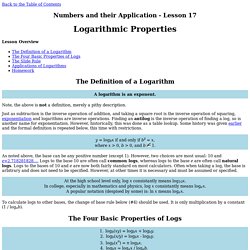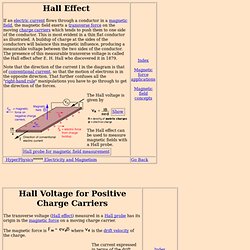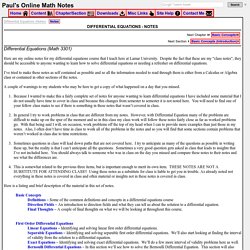

Combinations and Permutations. What's the Difference?

In English we use the word "combination" loosely, without thinking if the order of things is important. In other words: So, in Mathematics we use more precise language: In other words: A Permutation is an ordered Combination. Permutations There are basically two types of permutation: Repetition is Allowed: such as the lock above. 1. These are the easiest to calculate.
When we have n things to choose from ... we have n choices each time! When choosing r of them, the permutations are: n × n × ... (In other words, there are n possibilities for the first choice, THEN there are n possibilites for the second choice, and so on, multplying each time.) Which is easier to write down using an exponent of r: n × n × ... Example: in the lock above, there are 10 numbers to choose from (0,1,...9) and we choose 3 of them: 10 × 10 × ... (3 times) = 103 = 1,000 permutations So, the formula is simply: 2. In this case, we have to reduce the number of available choices each time. Do you see? 1. 2. Biasing of P-N Junctions. Logarithmic Properties. Back to the Table of Contents Numbers and their Application - Lesson 17 Lesson Overview The Definition of a Logarithm Note, the above is not a definition, merely a pithy description.

Just as subtraction is the inverse operation of addition, and taking a square root is the inverse operation of squaring, exponentiation and logarithms are inverse operations. As noted above, the base can be any positive number (except 1). To calculate logs to other bases, the change of base rule below (#4) should be used. The Four Basic Properties of Logs These four basic properties all follow directly from the fact that logs are exponents. Additional properties, some obvious, some not so obvious are listed below for reference. The Slide Rule The invention of logs was followed quickly by the invention of the slide rule. From this we can readily verify such properties as: log 10 = log 2 + log 5 and log 4 = 2 log 2. 1024 = 210 can be readily seen as 10 log10 2 Applications of Logarithms However x log9x + logy8 = 2.
Hall Effect. The Hall effect is a conduction phenomenon which is different for different charge carriers.

In most common electrical applications, the conventional current is used partly because it makes no difference whether you consider positive or negative charge to be moving. But the Hall voltage has a different polarity for positive and negative charge carriers, and it has been used to study the details of conduction in semiconductors and other materials which show a combination of negative and positive charge carriers.
The Hall effect can be used to measure the average drift velocity of the charge carriers by mechanically moving the Hall probe at different speeds until the Hall voltage disappears, showing that the charge carriers are now not moving with respect to the magnetic field. Other types of investigations of carrier behavior are studied in the quantum Hall effect. Microsoft PowerPoint - 12EDCMOSFETLesson12.ppt [Compatibility Mode] - 12EDCMOSFETLesson12.pdf. Differential Equations. Differential Equations (Math 3301) Here are my online notes for my differential equations course that I teach here at Lamar University.

Despite the fact that these are my “class notes”, they should be accessible to anyone wanting to learn how to solve differential equations or needing a refresher on differential equations. I’ve tried to make these notes as self contained as possible and so all the information needed to read through them is either from a Calculus or Algebra class or contained in other sections of the notes. A couple of warnings to my students who may be here to get a copy of what happened on a day that you missed. Because I wanted to make this a fairly complete set of notes for anyone wanting to learn differential equations I have included some material that I do not usually have time to cover in class and because this changes from semester to semester it is not noted here. Here is a listing and brief description of the material in this set of notes.
Basic Concepts.